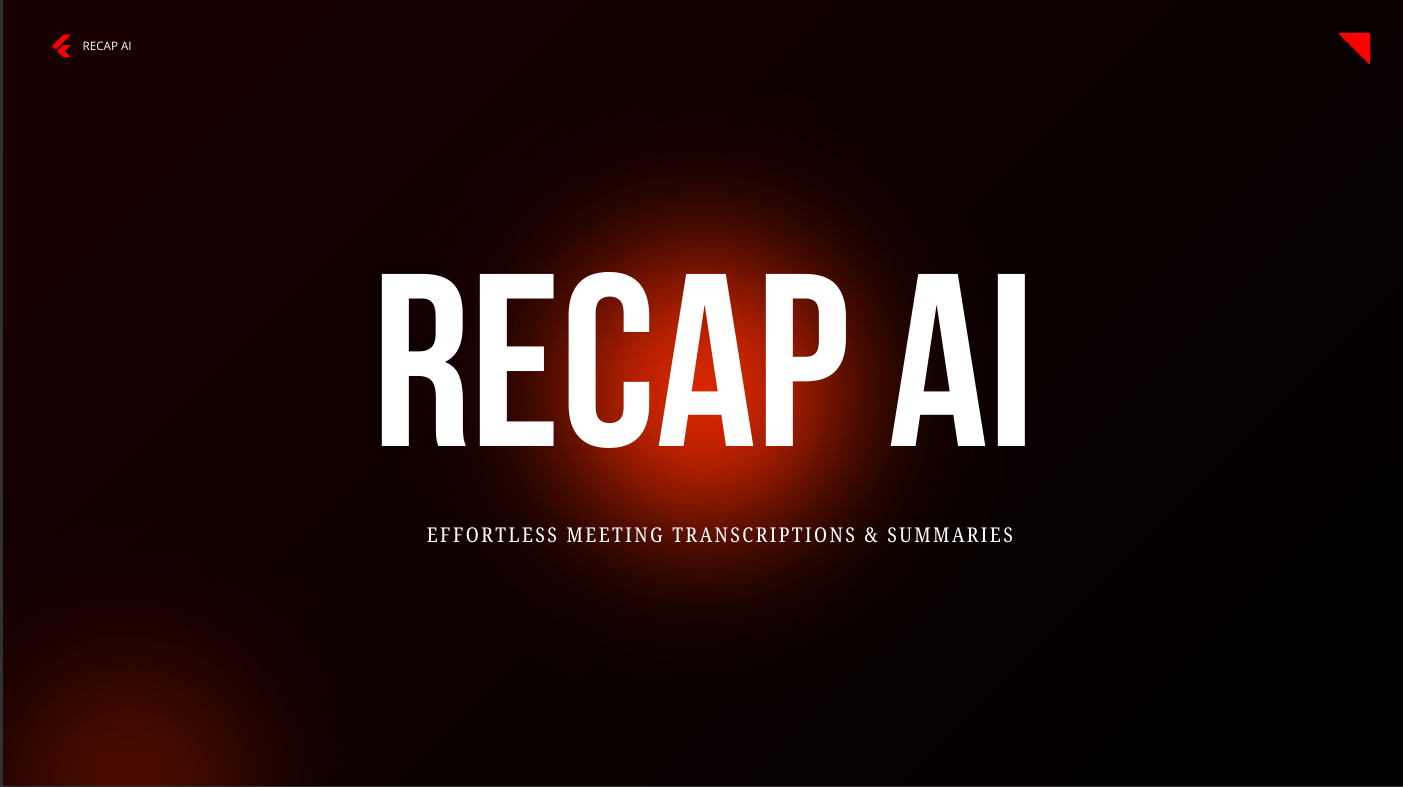
✨ Introduction
Meetings are an essential part of any organization, but keeping track of key discussions, decisions, and action items can be overwhelming. Recap AI solves this by recording, transcribing, and summarizing meetings, helping teams stay organized effortlessly.
In this post, I'll break down how I built Recap AI, the tech stack I used, the challenges I faced, and the key lessons I learned along the way.
🛠️ Tech Stack
To build Recap AI, I focused on scalability, accuracy, and a seamless user experience. Here’s what I used:
Frontend (Mobile App & Web Dashboard)
- React Native – Cross-platform mobile app for recording meetings.
- Next.js – Web dashboard for managing recordings and summaries.
- TailwindCSS & Shadcn UI – For a clean and modern UI.
Backend & Infrastructure
- Node.js & Next.js API Routes – Backend logic for handling requests.
- PostgreSQL + Prisma – Storing meeting metadata and transcripts.
- Deepgram API – High-accuracy speech-to-text transcription.
- OpenAI API – Summarization and key point extraction.
Storage & Deployment
- Supabase – Storing transcripts and metadata.
- Vercel – Hosting the Next.js dashboard.
- Expo – Deploying the React Native app.
⚡ Challenges & How I Solved Them
1️⃣ Capturing Clear Audio for Transcription
Challenge: Mobile microphones often pick up background noise, reducing transcription accuracy.
Solution: I prompt users to use speaker mode while recording for better audio quality.
2️⃣ Handling Long Transcripts Efficiently
Challenge: Large transcripts slowed down summarization and storage.
Solution: I chunked transcripts into smaller sections before sending them to OpenAI, improving performance and accuracy.
3️⃣ Keeping Costs Manageable
Challenge: Transcription and AI summarization are expensive.
Solution:
- Used whisper-based transcription for lower-cost processing.
- Implemented rate limiting to prevent excessive API usage.
- Built a subscription model ($10/month) to sustain operations.
4️⃣ Designing a Simple Yet Powerful UX
Challenge: Users needed an intuitive way to access their recordings, transcripts, and summaries.
Solution:
- Implemented a bottom sheet UI for viewing transcripts and summaries.
- Added a Spotify-style audio player to listen to recordings.
🎯 Key Takeaways
1️⃣ Start simple, iterate fast – The first MVP only had basic recording and transcription. Over time, I added summarization and AI enhancements.
2️⃣ Optimize for cost early – AI-based features can get expensive quickly. Finding cost-effective alternatives was crucial.
3️⃣ User experience is everything – Even the best AI tech won’t work if the UI is confusing. A clean, simple UX made Recap AI more usable.
4️⃣ AI is powerful, but not perfect – Transcription errors still happen, so adding manual editing features in the future could improve user control.
🚀 What’s Next?
Recap AI is still evolving! Future updates may include:
✅ Speaker identification – Highlighting who said what.
✅ Meeting action items & follow-ups – AI-generated tasks based on discussions.
✅ Desktop app version – To capture audio directly from system sound.
Try Recap AI 👉 recap.itsaman.site
Have questions or feedback? Let me know in the comments! 🚀